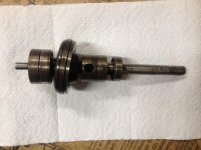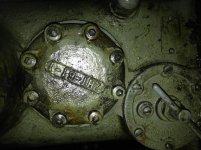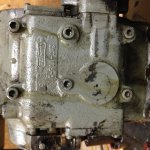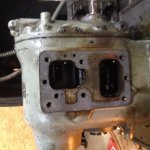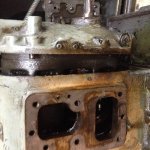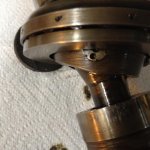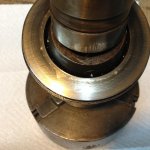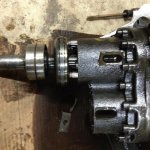plumberpieco
Cast Iron
- Joined
- Feb 27, 2010
- Location
- cleveland
I've moved my equipment to another location and thought it was time to set up my 10ee properly. Back wen I got it I found an open slot and left it on the skid till it found it's permanent resting place. Had some issues when I first fired it up with vibration and slowly started to work them out, bad belts, still on skid etc, but still had a little shake to it. Now mind you it wasn't consistent through the rpm range. Now that I moved it and got it off the skid HOLLY crap this thing shakes! My skid must have acted as a dampener. So I pulled the motor to check the bearings and they seemed fine. After looking things over I noticed some small rubber pads between the hydraulic sump and the base plate, then saw large rubber blocks under the base plate. Next everything came out and I'm hoping my trouble is just in the rubber mounts.

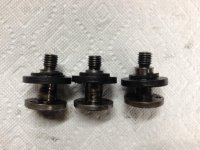

As you can see the main mounts have compressed with quite a variance and gave it quite a bit of room to give it the shakes. One of the mounting bolts is actually bent at the threaded portion. Knowing nothing of later 10ee's do they have a similar dampening system? I have a flat belt drive on the lathe and it did not track very well, this is probably why. The belt would also come off if I was doing too heavy of an interrupted cut. The one mount that doesn't have much evidence of being compressed measures .75" tall. I'm thinking maybe a tad larger would be fine since this is 75 years old. Any suggestions on the material to use. While I'm at it I'll make a new cross feed screw and nut too.
Thanks Z



As you can see the main mounts have compressed with quite a variance and gave it quite a bit of room to give it the shakes. One of the mounting bolts is actually bent at the threaded portion. Knowing nothing of later 10ee's do they have a similar dampening system? I have a flat belt drive on the lathe and it did not track very well, this is probably why. The belt would also come off if I was doing too heavy of an interrupted cut. The one mount that doesn't have much evidence of being compressed measures .75" tall. I'm thinking maybe a tad larger would be fine since this is 75 years old. Any suggestions on the material to use. While I'm at it I'll make a new cross feed screw and nut too.
Thanks Z




